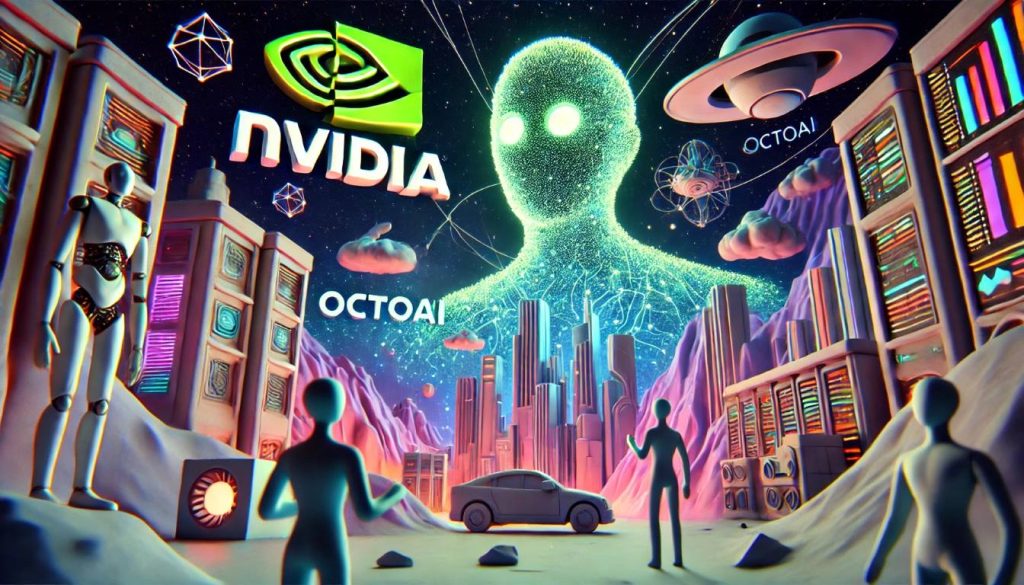OctoAI, a promising Seattle-based AI startup known for its innovative solutions in machine learning, has recently been acquired by Nvidia for a staggering $165 million. This OctoAI acquisition is not just another business deal; it’s poised to reshape the landscape of economical large language model (LLM) AI distribution. As Nvidia continues to expand its footprint in the AI sector, this strategic move is set to enhance their offerings and streamline operations in ways that could benefit developers and businesses alike.
Nvidia’s Strategic Move
Overview of the Acquisition
The buzz around Nvidia’s acquisition of OctoAI began circulating in mid-September 2024 when reports surfaced about advanced talks between the two companies. The official confirmation came from OctoAI’s CEO, Luis Ceze, who expressed his excitement about joining Nvidia and contributing to expanding efforts in machine learning compilers and cloud infrastructure. Founded in 2019, OctoAI specializes in providing users access to various foundation models while abstracting away the complexities associated with underlying infrastructures.
This acquisition marks a significant milestone for both companies. For Nvidia, which has already made several acquisitions this year alone, it represents an opportunity to bolster its software capabilities alongside its well-known hardware prowess. On the other hand, OctoAI’s technology aligns perfectly with Nvidia’s ongoing mission to make AI more accessible and efficient across diverse platforms.
Financial Implications of OctoAI Acquisition
The financial aspects surrounding this OctoAI acquisition are noteworthy as well. Initially reported at $165 million, some estimates suggest that when factoring in debts and other considerations, the deal could surpass $250 million. This substantial investment underscores Nvidia’s commitment to enhancing its artificial intelligence portfolio amidst growing competition within the tech industry.
Moreover, OctoAI had previously raised approximately $132 million over several funding rounds before being acquired. Their last Series C round led by Tiger Global Management saw them valued at around $900 million back in November 2021. Despite facing challenges like shutting down commercial services effective October 31st post-acquisition announcement—an indication that existing customers will need to transition elsewhere—the financial backing from Nvidia signals confidence in future innovations stemming from this merger.
| Aspect | Details |
|---|---|
| Acquisition Cost | $165M (potentially >$250M) |
| Total Funding Raised | ~$132M |
| Latest Valuation | ~$900M |
| Date Services Wind Down | October 31, 2024 |
Transforming AI Distribution
How OctoAI Enhances Nvidia’s Offerings
Nvidia is no stranger to leveraging acquisitions for growth; however, integrating OctoAI into their ecosystem brings unique advantages that can transform how machine learning models are deployed and operated. At its core, OctoAI provides a robust platform designed specifically for optimizing machine learning performance across various hardware configurations—from AMD CPUs to Intel processors and even mobile chips from Qualcomm.
By utilizing Apache TVM—a project co-founded by Ceze—OctoAI offers a clean abstraction layer between ML frameworks like TensorFlow or PyTorch and underlying hardware systems. This means developers can focus on building applications without worrying about compatibility issues or performance bottlenecks caused by hardware limitations.
With Ceze stepping into a leadership role as VP of AI systems software at Nvidia post-acquisition, there’s potential for seamless integration between OctoAI’s capabilities and existing Nvidia technologies such as their NIM (Nvidia Inference Microservices). Such synergy could lead to more streamlined workflows for developers working on custom AI solutions.
Potential Impact on LLM AI Models
The implications of this OctoAI acquisition extend beyond just operational efficiency; they also touch upon advancements in large language model (LLM) development itself. The rise of generative AI has pushed organizations toward adopting LLMs more aggressively—and having an established player like Nvidia behind OctoAI can significantly accelerate innovation cycles within this space.
As demand grows for cost-effective yet powerful LLM solutions capable of handling diverse workloads—from natural language processing tasks to complex data analyses—Nvidia’s backing enables faster iterations on existing models while ensuring high performance across different environments. By leveraging both software enhancements from OctoAI along with cutting-edge GPU technology developed by Nvidia, companies can expect improved outcomes without incurring excessive costs typically associated with high-performance computing resources.
Future Prospects for Nvidia and OctoAI
Market Reactions to the Acquisition
Industry response following news of the OctoAI acquisition has been largely positive among market analysts who view it as indicative of broader trends favoring consolidation within tech sectors focused on artificial intelligence development. Investors have shown interest due partly because such moves often lead toward enhanced competitive positioning against rivals like AMD or Google Cloud Platform—all vying for dominance over lucrative segments entrenched deeply within enterprise ecosystems.
However, there are concerns regarding regulatory scrutiny tied closely with increasing consolidation trends seen throughout Silicon Valley lately—especially given how heavily regulated areas surrounding data privacy continue evolving rapidly worldwide today.
Long-term Goals and Innovations
Looking ahead after this pivotal OctoAI acquisition, both companies appear committed towards fostering long-term goals centered around making artificial intelligence accessible while driving technological innovations forward together harmoniously! With Ceze now leading efforts at NVIDIA aimed explicitly at enhancing machine learning compiler technologies alongside cloud infrastructure improvements tailored specifically towards supporting diverse application needs—it seems likely we’ll see exciting developments unfold soon enough!
In summary: As we witness these shifts taking place right before our eyes within one of today’s most dynamic industries—the convergence between advanced computing power provided through GPUs combined synergistically via smart software solutions—is bound only further ignite creativity amongst developers eager push boundaries defining what machines can achieve moving forward! To explore more insights into these transformative changes happening across tech landscapes today visit Datanami.

